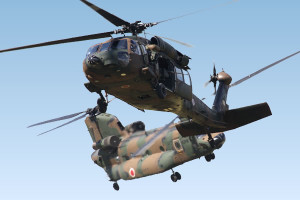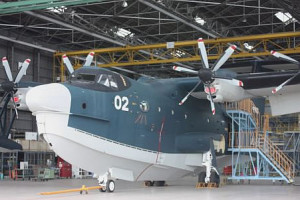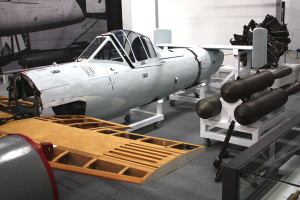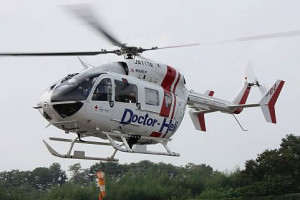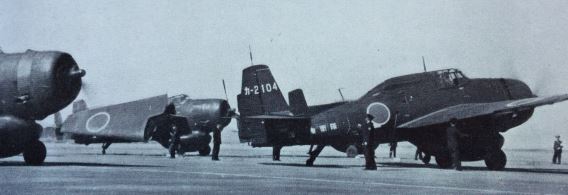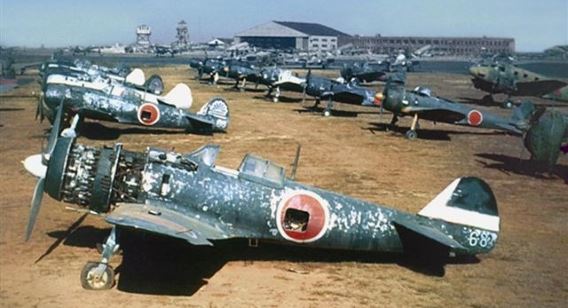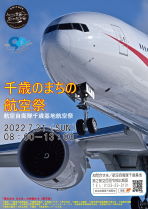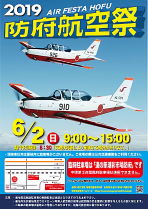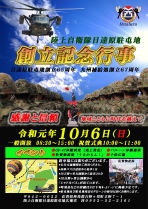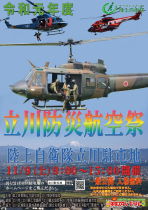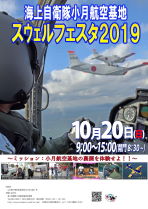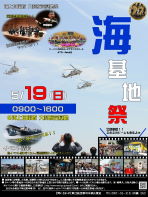Early SDF History
On July 1, 2024, Japan’s Self-Defense Forces will commemorate their 70th anniversary. The plan is for this section of the website to place some emphasis on the formative years from the early 1950s, charting the services’ beginnings from the nascent predecessor organizations and leading up to the arrival of the first mainstay aircraft types.
To be added to in the coming months, the chronology shown below provides snapshots from the immediate postwar period. As J-HangarSpace is committed to being more than just about the aircraft, it is hoped that the full version of this section will include some contemporary eyewitness accounts.
CHRONOLOGY OF EVENTS (1945–1964)
There are some variations in the English terms used to describe the organizations that preceded the JGSDF and JMSDF. For the purposes of this chronology, the following generally accepted translations are used:
| 警察予備隊 | Keisatsu Yobitai | National Police Reserve (NPR) (in existence from Aug. 10, 1950 to July 31, 1952) |
| 保安隊 | Hōantai | National Security Force (NSF) (from Aug. 1, 1952 to June 30, 1954) |
| 海上警備隊 | Kaijōkeibitai | Maritime Guard (from Apr. 26, 1952 to July 31, 1952) |
| 警備隊 | Keibitai | Coastal Security Force (CSF) (from Aug. 1, 1952 to June 30, 1954) |
| 保安庁 | Hōanchō | National Safety Agency (NSA) (from Aug. 1, 1952 to June 30, 1954) |
(Above and below) In 1955, the supply of U.S. aircraft to the three SDF services was in full swing.
These photos were taken at Tateyama, Chiba Prefecture, on February 12 that year, when a
ceremony was held to mark the official handover of 10 Grumman TBM-3W2 Avengers
and 12 North American SNJs to the nascent JMSDF. The event was covered by
Sekai no Kōkūki (The World’s Aircraft), a monthly magazine that had been
launched in 1951 but sadly was to cease publication in 1957.
(Photos from April 1955 issue of The World’s Aircraft used with permission of
Hobun Shorin Co., Ltd.)
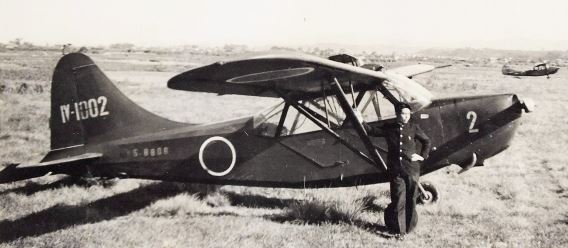 A rare photo of a JGSDF Stinson L-5 Sentinel. Assigned to the 4th District Air Unit at Ozuki,
A rare photo of a JGSDF Stinson L-5 Sentinel. Assigned to the 4th District Air Unit at Ozuki,
Yamaguchi Prefecture, this example was noted at Oita airfield, Oita Prefecture, on November 1,
1955, in the days when security was clearly not a high priority. The JGSDF inherited a
motley collection of around 35 L-5s in four variants from the National Security Force,
but all had been retired by 1958. (Photo: Takao Kadokami)
1945
| Aug. 15 | Emperor’s surrender broadcast marks end of Pacific War |
| Aug. 30 | Supreme Commander for the Allied Powers (SCAP) Gen. Douglas MacArthur (1880–1964) lands at Atsugi air base, Kanagawa Prefecture First British Commonwealth party to go ashore in Japan receives keys to Yokosuka ahead of naval base’s official surrender (See photos below). Contemporary newsreel footage can be found here [link] |
| Sept. 2 | Surrender document signed aboard U.S.S. Missouri anchored in Tokyo Bay, followed by mass flypast of 462 B-29 bombers |
| Known in Japan as General Headquarters (GHQ), SCAP offices established (moved to Tokyo Sept. 8) |
|
| GHQ General Order No. 1 grounds all Japanese aircraft and bans all aviation-related activities |
 His trademark pipe wedged in the corner of his mouth, Gen. Douglas MacArthur is joined by other high-
His trademark pipe wedged in the corner of his mouth, Gen. Douglas MacArthur is joined by other high-
ranking officers for a photo call immediately after arriving at Atsugi air base on August 30, 1945.
(Photo: Army Signal Corps Collection, U.S. National Archives via Wikimedia Commons)
 Yokosuka Naval Base on Tokyo Bay, August 30, 1945. Royal Australian Navy Captain H. J. Buchanan
Yokosuka Naval Base on Tokyo Bay, August 30, 1945. Royal Australian Navy Captain H. J. Buchanan
receives a set of keys from Commander Yuzo Tanno, who had been in charge of the base stores.
Commanding the British Pacific Fleet’s Seventh Destroyer Flotilla from HMAS Napier,
Buchanan had led the first British Commonwealth party to go ashore in Japan. This
low-key but poignant event took place shortly before the arrival, on board the cruiser
USS San Diego, of the U.S. Navy officers tasked with receiving the official surrender.
(Photo: Australian War Memorial via Wikimedia Commons)
Written by Australian war correspondent John Pacini, an eyewitness account of the events of
that day can be found here [link].
 Vice Admiral Michitaro Totsuka (1890–1966) stands on the pier next to the USS San Diego soon after
Vice Admiral Michitaro Totsuka (1890–1966) stands on the pier next to the USS San Diego soon after
surrendering to a delegation led by U.S. Navy Third Fleet Chief of Staff Rear Admiral Robert B. Carney
(1895–1990). In a military career spanning 35 years, Totsuka had been involved in naval aviation since
1936 and had served as IJNAF commander-in-chief from September 1944 until taking over as the
Yokosuka Naval Base’s last commander in May 1945.
(Photo: U.S. Navy/U.S. National Archives via Wikimedia Commons)
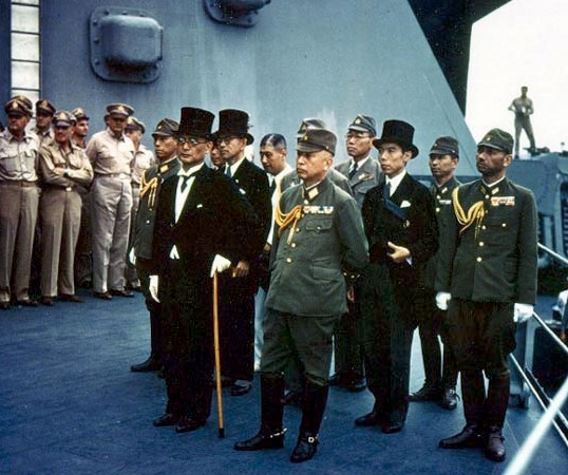 The Japanese delegation attends the surrender ceremonies held on board the USS Missouri in Tokyo Bay,
The Japanese delegation attends the surrender ceremonies held on board the USS Missouri in Tokyo Bay,
September 2, 1945. Second from the left in the second row is Katsuo Okazaki, who was to become foreign
minister in 1952 and a signatory of the U.S.-Japan Mutual Defense Assistance Agreement in March 1954.
(Photo: U.S. Naval Historical Center via Wikimedia Commons)
Two scenes typical of the sights that awaited the Allied occupying forces at military airfields throughout
Japan immediately after the end of the war.
(Above) Mitsubishi G4M (Betty) bombers (background) and Nakajima J1N (Irving) night fighters
awaiting their fate at the Yokosuka Naval Air Arsenal’s Oppama airfield, Kanagawa Prefecture.
(Photo via Wikimedia Commons).
(Below) Rows of Nakajima Ki-84 Hayate (Frank, front row) and Ki-43 Hayabusa (Oscar) fighters
parked at an unidentified airfield.
(Photo: USAAF via Wikimedia Commons)
1946
| Jan. 27 | GHQ suspends Japanese administrative rights over Ogasawara (Bonin) and Ryukyu (Okinawa) islands (Reverted to Japanese control in June 1968 and May 1972, respectively) |
| Apr. 10 | First postwar general election held against backdrop of acute food shortages and social unrest |
| May 22 | Shigeru Yoshida (1878–1967) appointed first postwar prime minister |
1947
| May 3 | Constitution of Japan comes into effect (following Nov. 3, 1946 announcement) |
| Dec. 17 | Law governing establishment of police forces promulgated |
1948
| Apr. 27 | Maritime Safety Agency Law promulgated |
| May 1 | Kaijōhōanchō (Maritime Safety Agency, MSA) formed |
1949
| |
|
| |
|
1950
| June 25 | Outbreak of Korean War (ends July 27, 1953) |
| July 8 | SCAP Gen. MacArthur issues directive authorizing establishment of National Police Reserve (NPR) and expansion of MSA |
| Aug. 10 | Paramilitary Keisatsu Yobitai (National Police Reserve, NPR) comes into being |
| Aug. 13 | NPR recruitment begins |
| Aug. 14 | Governor of Kagawa Prefecture Keikichi Masuhara (1903–1985) appointed NPR’s first director general |
| Sept. 7 | NPR HQ relocates from National Police Agency HQ to Etchujima, Tokyo |
1951
| Jan. 23 | NPR control passes to Minister of State Takeo Ohashi (1904–81) |
| April | MacArthur replaced by Gen. Matthew Ridgway (1895–1993) |
| Sept. 8 | Multinational Treaty of San Francisco peace accord and Japan-U.S. Security Treaty signed (both come into effect Apr. 28, 1952) |
| Oct. 20 | NPR unit based in Ozuki, Yamaguchi Prefecture, first to be deployed in typhoon relief operations |
 Sporting fake U.S. markings, this former IJAAF Nakajima Ki-115 Tsurugi (Sword) special attack
Sporting fake U.S. markings, this former IJAAF Nakajima Ki-115 Tsurugi (Sword) special attack
(kamikaze) aircraft was a familiar sight close to the gate at Yokota AB until its removal in 1952.
(Photo: San Diego Air & Space Museum via Wikimedia Commons)
1952
| Apr. 26 | Kaijōkeibitai (Maritime Guard) established under the MSA |
| Apr. 28 | General Order No. 10 lifts remaining bans on aviation activities |
| GHQ disbanded | |
| July 31 | National Safety Agency Law promulgated |
| Aug. 1 |
Japan permitted to form Hōanchō (usually translated as National |
|
The agency oversees the NPR, now expanded and renamed the The NSF and CSF were to be the forerunners of the JGSDF and |
|
| Oct. 15 | NSF Aviation School formed at Hamamatsu with 20 ex-U.S. Army Aeronca L-16s |
| Oct. 30 | Tokutaro Kimura (1886–1982) appointed National Safety Agency director general |
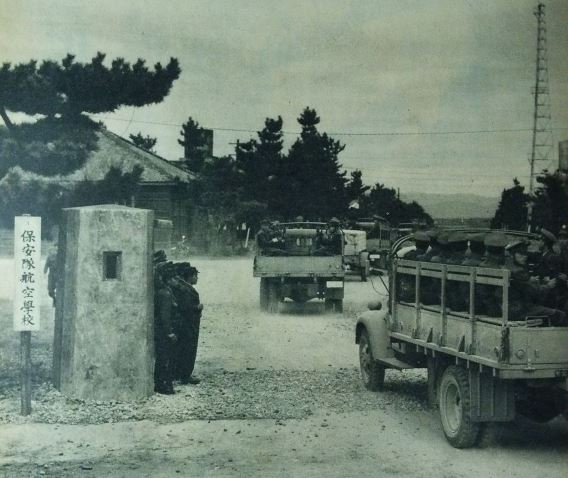 A convoy of trucks arrives at the National Safety Force Aviation School at Hamamatsu,
A convoy of trucks arrives at the National Safety Force Aviation School at Hamamatsu,
Shizuoka Prefecture, soon after the school’s founding in October 1952.
(Photo: The Asahi Shimbun via Wikimedia Commons)
1953
| Jan.1 | Security Advisory Group commences work in Japan |
| January | NSF receives ex-U.S. Army Stinson L-5s, Piper L-21B and 10 Beech T-34A Mentors Coastal Security Force (CSF) receives 10 T-34As |
| March | Kawasaki Aircraft commences overhauls of U.S. Air Force (USAF) Lockheed T-33 jet trainers |
| June | Mitsubishi commences overhauls of USAF Curtiss C-46 Commando and Douglas B-26 Invader aircraft |
| July 21 | First flight of Kawasaki KAL-1, first postwar, Japanese-designed all-metal aircraft |
| July 27 | Korean War ends |
| Aug. 1 | Weapons Production Law promulgated |
| Sept. 16 | CSF establishes base at Tateyama under Yokosuka regional command, forms Bell 47D-equipped Tateyama Air Sqn |
| September | Fuji Heavy Industries (FHI) signs contract with Beechcraft for licence production of T-34A Mentor training aircraft |
| Oct. 5 | Systems Research Committee set up within National Safety Agency’s Hōankyoku (Security Administration) to look into aviation-related preparations |
| Oct. 16 | NSF places order with FHI for 30 T-34As |
| Oct. 30 | Liberal Democratic Party politician (former trade and industry minister, later prime minister) Hayato Ikeda (1899–1965) and U.S. Assistant Secretary of State for Far Eastern Affairs Walter S. Robertson (1893–1970) hold extensive talks that cover gradual increase in SDF strength |
| Nov. 26 | Article 7 of Defense Buildup Plan (formation of JASDF, equipment framework) completed |
| Dec. 1 | CSF establishes base at Kanoya under Sasebo regional command, forms Kanoya Air Sqn (T-34As) |
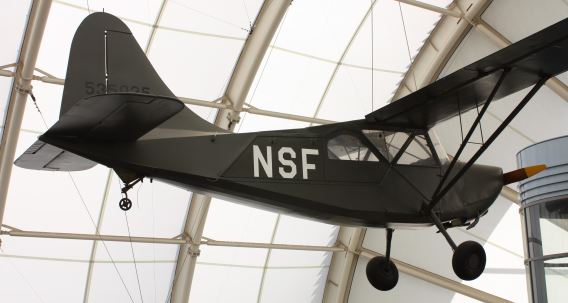 The Stinson L-5 Sentinel suspended from the ceiling at the Tokorozawa Aviation Museum in
The Stinson L-5 Sentinel suspended from the ceiling at the Tokorozawa Aviation Museum in
Saitama Prefecture dates back to the National Safety Force era.
1954
From July 1, 1954 JASDF / JGSDF / JMSDF
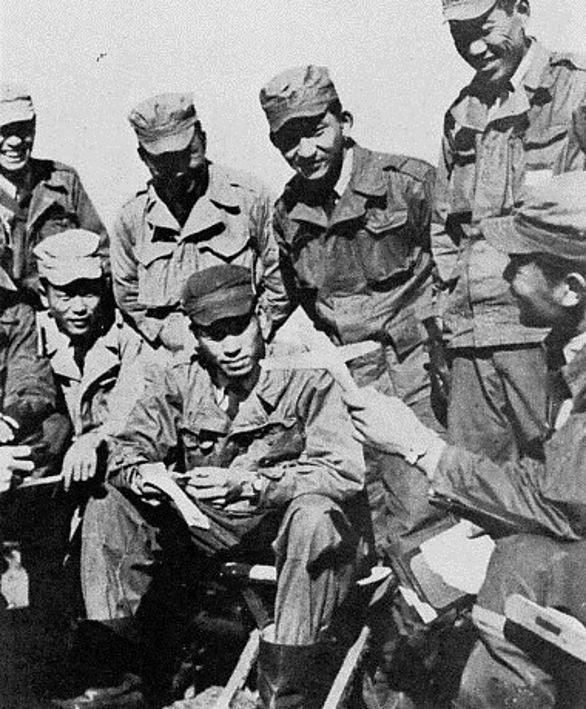 NSF aviation cadets, February 1954 (Photo: Wikimedia Commons)
NSF aviation cadets, February 1954 (Photo: Wikimedia Commons)
| Jan. 10 | NSF air units formed: Northern Regional (Sapporo); district air units at Hamamatsu (1st and 3rd air units) Asahikawa (2nd) and Ozuki (4th) |
| Feb. 1 | Kōkū Junbishitsu (Air Preparatory Office, forerunner of Air Staff Office) formed at Etchujima under leadership of Makoto Yamada, who at same time headed Security Administration |
| February | Mitsubishi commences overhauls of USAF F-86F fighters |
| Mar. 8 | United States and Japan sign Mutual Defense Assistance (MDA) agreement |
| May 14 | Japan-U.S. Lend-Lease Agreement covering naval vessels signed |
| May | CSF receives three S-55s for operation from Tateyama |
| June 1 | One month before formation of JASDF, Provisional NSF Detachment formed at Funaoka, Miyagi Prefecture, commences training course, moves to Matsushima following day. U.S. instructors train selected pilots with wartime experience on USAF T-6s from June 22. (See Nov. 30) |
| June 10 | Total of 38 aircraft maintenance trainees commence practical training course given by U.S. instructors at Matsushima (ends Sept. 30) |
| June 18 | Japan’s Cabinet decides to appoint National Safety Agency Director General Kentarō Uemura (1908–1981) as first Chief of the Air Staff |
| June 22 | U.S. Far East Air Forces commences training on T-6s of first 16-man pilot course, 18 receive English language tuition (Matsushima) |
| June | NSF receives ex-U.S. Army Cessna L-19As |
| July 1 | Japan Defense Agency (JDA) established and with it the three Self-Defense Forces (after relevant laws promulgated June 9). Air Staff Office formed at Etchujima |
| July 5 | JASDF flying school established at Hamamatsu with 18 imported former NPR/NSF T-34 Mentors. (Maintenance and communications schools follow at same location on Sept. 1.) |
| Sept. 3 | First flight of FHI-assembled T-34 (delivered Oct. 28) |
| Oct. 12 | SDF aircraft markings formally announced |
| Oct. 28 | JASDF receives first FHI-assembled T-34A |
| Nov. 30 | First 13 JASDF pilots receive their wings |
| Dec. 10 | Seiichi Omura (1892–1968) appointed Minister of State for Defense |
 A rear view of the lineup of T-34A Mentors shown on this website’s homepage. Taken at Oakland Airport in
A rear view of the lineup of T-34A Mentors shown on this website’s homepage. Taken at Oakland Airport in
October 1954, this angle reveals that all the aircraft, which were en route to the JASDF,
carried the same N12B ferry registration. (Photo: William T. Larkins)
 Tateyama, Chiba Prefecture, December 2, 1954. A ceremony is held to mark the official handover to the
Tateyama, Chiba Prefecture, December 2, 1954. A ceremony is held to mark the official handover to the
nascent JMSDF of 10 Grumman TBM-3W2 Avengers and 12 North American SNJs.
(Photo from the April 1955 issue of The World’s Aircraft used with permission of
Hobun Shorin Co., Ltd.)
 The second of the three Westland-Sikorsky WS-51 Dragonfly Mk.1As operated by the JMSDF as S-51s
The second of the three Westland-Sikorsky WS-51 Dragonfly Mk.1As operated by the JMSDF as S-51s
from July 1954. All three had initially entered service with the Coastal Safety Force the previous January.
The two remaining aircraft were withdrawn from use in November 1961.
(Photo: San Diego Air & Space Museum via Wikimedia Commons)
1955
| Jan. 20 | JASDF receives first Lockheed T-33 and North American T-6 Texan trainers as well as Curtiss C-46D Commando transports |
| Feb. 12 | Ceremony held at Tateyama to mark delivery of 10 TBM-3W2 and 12 SNJs supplied under Military Security Assistance |
| May 28 | First five jet pilots complete T-33A course at Tsuiki |
| June 5 | First flight of Fuji LM-1 |
| Aug. 12 | First nine JASDF pilots sent to United States for training (return to Japan as qualified F-86F instructors Feb. 6, 1956) |
| October | T-34A enters licence production at Fuji Heavy Industries |
| Oct. 12 | First seven F-86Fs handed over at Tsuiki |
| Oct. 15 | First flight of FHI licence-built T-34A |
| November | First JASDF T-6 training school formed at Matsushima, Miyagi Prefecture |
| December | Kōkūdan (Air Wing) commanding first F-86F unit formed at Hamamatsu, Shizuoka Prefecture |
 The first of 16 U.S.-built P2V-7 Neptunes takes off on a test flight from Lockheed’s Burbank, California,
The first of 16 U.S.-built P2V-7 Neptunes takes off on a test flight from Lockheed’s Burbank, California,
plant late in 1955.
(Photo from the March 1956 issue of The World’s Aircraft used with permission of
Hobun Shorin Co., Ltd.)
 The JMSDF received a bulk delivery of 17 Lockheed PV-2 Harpoon aircraft for training purposes on
The JMSDF received a bulk delivery of 17 Lockheed PV-2 Harpoon aircraft for training purposes on
January 16, 1955. Seen here at Oita airport on August 24, 1957, 4577 (delivered as 4107) has the
tail marking prefix カ (KA) to denote that its home base is Kanoya. (Photo: Takao Kadokami)
1956
| Jan. 10 | 1st Sqn forms on F-86F at Hamamatsu |
| Jan. 26 | First Kawasaki-assembled T-33 delivered |
| Mar. 7 | First two P2V-7s arrive at Haneda Airport |
| Mar. 22 | Signing of MDA-related Japan-U.S. Technical Agreement |
| Mar. 23 | JDA relocates to Kasumigaseki, Tokyo |
| Mar. 26 | Destroyer Harukaze (Spring Breeze), the first postwar, domestically produced naval vessel completed |
| Sept. 20 | First Mitsubishi-assembled F-86F handed over at Komaki factory |
| Oct. 1 | Air Wing re-designated 1st Air Wing due to formation of 2nd Air Wing (Hamamatsu) |
 The first Japanese-built T-33 jet trainer was unveiled to the press at Kakamigahara, Gifu Prefecture, on
The first Japanese-built T-33 jet trainer was unveiled to the press at Kakamigahara, Gifu Prefecture, on
January 21, 1956. This was only five days after Lockheed engineering flight test pilot Ted Limmer
had taken the aircraft aloft on its maiden flight.
(Photo from the March 1956 issue of The World’s Aircraft used with permission of
Hobun Shorin Co., Ltd.)
 A photo on the wall at the Mitsubishi Heavy Industries Komaki South Plant museum records the start of
A photo on the wall at the Mitsubishi Heavy Industries Komaki South Plant museum records the start of
JASDF F-86F production in 1956 and the handover ceremony for the first aircraft in September that year.
1957
| Jan. 21 | JASDF receives first KHI licence-built T-33A |
| June 14 | First Defense Build-up Plan receives Cabinet approval |
| August | First Sikorsky H-19C rescue helicopters enter service |
1958
| Jan. 14-Feb. 28 | First JMSDF ocean training exercise off Hawaii |
| Jan. 19 | Maiden flight of first indigenous jet trainer, the Fuji T1F2 (T-1A) |
| January | First F-86D Sabre all-weather fighters received (first F-86D squadron formed Aug. 1) |
| Feb. 17 | 2nd Air Wing at Chitose commences quick reaction alert (QRA) measures to counter incursions into Japan’s territorial airspace (Excluding Okinawa, which had yet to be returned to Japanese sovereignty, nationwide QRA coverage provided from 1960.) |
| Mar. 4 | F-86F instructor pilots from Hamamatsu-based 1st AW give first public aerobatic team display |
| May 13 | First “live” scramble from Chitose AB |
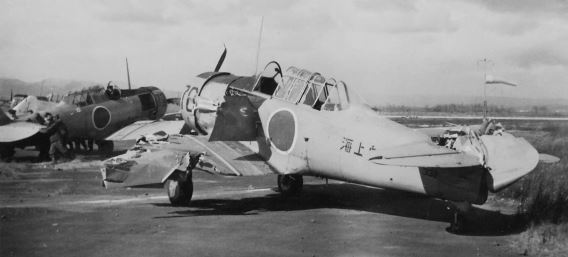 (Above and below) The early years of the Self-Defense Forces were not without incident. The JMSDF
(Above and below) The early years of the Self-Defense Forces were not without incident. The JMSDF
recorded its first fatal accident on July 8, 1955, when a PV-2 crashed on takeoff from Kanoya,
Kagoshima Prefecture. These photos show the aftermath of a fortunately non-fatal mishap on
January 17, 1958. En route from Utsunomiya, Tochigi Prefecture, to Kanoya, it is believed that
the leader of a gaggle of JMSDF SNJs had decided to make a fuel stop at the then Oita airport.
Including a northerly wind across a runway that ran east to west and the poor forward visibility
from an SNJ cockpit, a combination of factors resulted in aircraft 6170, which was taxying
toward the apron, being struck by the next aircraft to land, 6172. (Photos: Takao Kadokami)

1959
| Mar. 25 | JASDF receives last licence-built T-33A |
| |
|
| Dec. 11 | JMSDF receives first KHI licence-built P2V-7 |
 October 1959. The pilot of a U.S. Navy Sikorsky HSS-1 Seabat waits for a JGSDF Vertol V-44A to clear
October 1959. The pilot of a U.S. Navy Sikorsky HSS-1 Seabat waits for a JGSDF Vertol V-44A to clear
the landing zone designated for evacuating residents from Nagoya, Aichi Prefecture, in the aftermath
of the Isewan typhoon (Typhoon Vera). JG-0002 is today on display at the Tokorozawa Aviation
Museum, Saitama Prefecture. (Photo: U.S. Navy via Wikimedia Commons)
1960
| Jan. 11 | Defense Agency moves from Kasumigaseki to Ichigaya |
| Jan. 19 | New Japan-U.S. Security Treaty signed (goes into effect June 23) |
| May 17 | First flight of the Fuji T1F1 (T-1B) |
1961
| Jan. 13 | National Security Council decides to reorganize JGSDF into 13 divisions |
| July 1 | First flight of Lockheed-built F-104J Starfighter (Burbank, California) |
| July 18 | Cabinet approves Second Defence Build-up Plan |
| Aug. 25 | First flight of F-104DJ in United States |
| Nov. 6 | JASDF receives first F-86F converted to RF-86F standard |
| Dec. 21 | Partially assembled by Lockheed, first F-104J arrives at Nagoya (Komaki) Airport |
 Built by Lockheed, the first F-104J Starfighter made its maiden flight from the company’s Burbank Plant
Built by Lockheed, the first F-104J Starfighter made its maiden flight from the company’s Burbank Plant
on July 1, 1961. Having been dismantled and shipped to Mitsubishi’s Komaki Plant, the aircraft
was flown for the first time from Japanese tarmac on March 8, 1962.
(Photo: San Diego Air and Space Museum via Wikimedia Commons)
1962
| Mar. 8 | First flight of F-104J in Japan |
| Apr. 1 | First F-104J handed over to JASDF |
| Apr. 27 | First flight of F-104DJ in Japan |
| Sept. 21 | First F-104DJ handed over to JASDF |
1963
| |
|
| |
|
1964
| |
|
| |
|
Principal Reference Sources
Harries, Meirion and Susie, Sheathing the Sword, Hamish Hamilton, London, 1987
Defense of Japan 2002 White Paper, Urban Connections, Tokyo, 2002
For the Blue Sky (50th Anniversary of JASDF), Asagumo Shimbunsha, 2005
Kōkūjieitai 50 Shūnen (50th Anniversary of JASDF), Bunrindo, Tokyo, 2005
Kōkūjieitai no Tsubasa (JASDF Wings)/50th Anniversary of JASDF, Ikaros, 2005
Sengo Kōkūsaikaizengo no Kōkūshi (The History of Japanese Aviation before and after its Postwar Resumption), Japan Aviation Journalists’ Association, Tokyo, 2010
Various issues of JWIngs and Koku Fan magazines


